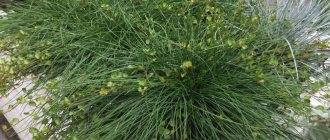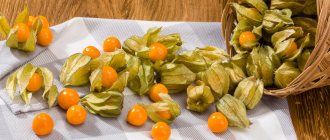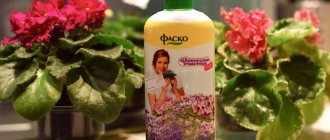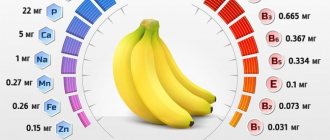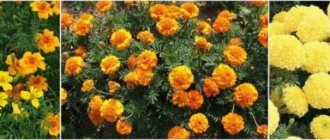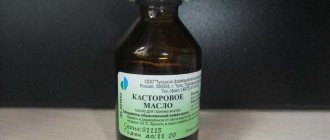The main dream of all gardeners is to get a big harvest. It is necessary to strive for its implementation in early spring, when all the preparatory gardening work is just beginning to be carried out. Fertilizers and fertilizing are the same irreplaceable means that not only strengthen and saturate seedlings with all useful substances, but also increase their productivity. Their use is a necessary and mandatory measure, since the amount of harvest at the end of the season depends on them. Vermicompost is the best option for feeding planting material. It consists only of natural ingredients and does not cause any harm to the environment or to people who will consume the grown vegetables, fruits or berries. But before using it for its intended purpose, you must read the instructions from the manufacturers. This article provides all the detailed information about liquid vermicompost, its composition and features of application in practice.
Composition of liquid vermicompost
Vermicompost is a liquid substance that contains the full composition of vermicompost (nutritive fertilizer that is formed as a result of the processing of organic waste by earthworms). Vermicompost contains a large number of useful substances that promote the active growth and development of all garden crops:
- humates;
- various micro- and macroelements;
- complex of vitamins;
- fulvic acids;
Vermicompost contains all the substances necessary for plant development
- amino acids;
- phytohormones (natural origin);
- spores of microorganisms living in the soil;
- strains of nitrogen-fixing bacteria.
Instructions for use
Tomato feeding is carried out in several ways:
- foliar irrigation;
- root application by irrigation.
When treating seeds, germination and survival rate of seedlings significantly improves. To process the seed, prepare a solution:
- 700 ml water;
- 10 ml of concentrate.
In mature bushes, the ripening time is reduced, and the harvest occurs much earlier.
Fertilizing plants with liquid vermicompost is carried out with a solution, which is prepared as follows:
- watering at the root in 1 liter of liquid is diluted with 5 ml of a concentrated solution;
- Irrigation of shoots in 4 liters of water dissolve 5 ml.
How to use? The seedlings are sprayed for the first time when the first 2-3 true leaves appear. Irrigation of bushes is carried out once every 10 days.
Properties of matter
The beneficial substances of vermicompost promote the active growth and development of plants, improve all metabolic processes and photosynthesis, thereby increasing productivity. The liquid concentrate, in addition to the above properties, also has a bactericidal effect on planting material (this occurs due to the inclusion of all components from the tissues of the worm, as well as antibiotics from microorganisms that lived in its intestines). It helps to strengthen the immunity of seedlings to various diseases, thereby reducing the possibility of its death.
Composition and properties
The content of vermicompost is complex and varied. A lot of useful organic matter from natural amino acids. There are also poly- and oligosaccharides, gluconic acid.
Detailed composition:
| Components | Level in % |
| Organic Ingredients | 30 |
| Nitrogen substances | 4 |
| Phosphorus | 5 |
| Potassium salts | 6 |
| Calcium | 2 |
| Magnesium | 1 |
| Bor | 2 |
| Copper | 0,3 |
| Cobalt | 0,02 |
| Iron | 1 |
| Manganese | 0,6 |
| Molybdenum | 0,05 |
| Zinc | 0,8 |
The product supplies plants with everything necessary for photosynthesis. The composition contains beneficial bacterial flora.
The addition of buffer vermicompost prevents excess salt accumulation. The physical parameters of the soil improve. An agronomically valuable substrate is formed.
Features of the fertilizer
Vermicompost has a number of features characteristic of this particular fertilizer. He is capable of:
- stimulate the growth and development of the root system;
- accelerate the germination of the planted seed;
- strengthen the immunity of seedlings to various diseases;
Vermicompost can be used for both garden and indoor plants
- protect the plant from the penetration of heavy metals and radionuclides;
- activate flowering;
- improve productivity;
- reduce the level of nitrates in fruits.
Advantages
The fertilizer qualitatively saturates the soil composition with valuable organic matter and minerals in full combination. Stimulates the growth of soil bacteria, contains a set of minerals and vitamins.
What positive results can be achieved using the product:
- acceleration and full germination of seeds after treatment before sowing;
- better survival rate of seedlings, formation of a developed root system;
- good growth and development of tomatoes;
- formation of healthy and strong bushes;
- increasing immunity and resistance to numerous pathogens;
- increase in productivity indicators;
- abundant flowering, setting a large number of fruits;
- naturalness and environmental friendliness of ripened tomatoes.
The vermicompost agent retains up to 70% of the liquid. Prevents the leaching of beneficial components. 15-20 times more effective than organic fertilizers such as compost or standard humus.
Instructions for using liquid vermicompost when planting garden crops
Liquid vermicompost, according to the instructions, can be used:
- For pre-sowing seed treatment.
- Before planting seedlings in the ground (to fertilize the soil and activate the growth of garden crops).
- For foliar fertilization and spraying of foliage parts of plants.
Pre-sowing treatment
Important! 500 ml of the finished concentrate is designed to process 1 kg of planting material (seed).
Experts recommend using an aqueous extract from vermicompost not only for feeding plants, but also for soaking the seed itself before planting. The active components of the substance promote early hatching of young sprouts, their rapid germination, acceleration of similarity and increased productivity in the future.
When using vermicompost, follow the dosage
Before soaking the seeds in vermicompost, the concentrated substance must be mixed with water (the recommended ratio of ingredients is 1:20). Soaking planting material has its own characteristics, since the seed of each plant species must be processed for a certain period of time (according to the instructions):
- legumes – no more than 6 hours;
- radish seeds and salad greens – no more than 12 hours;
- onions and potatoes are soaked 30-40 minutes before planting;
- seeds of vegetables and melons – 24 hours;
- parsley and dill - no more than 24 hours.
Using concentrate for seedlings
Liquid vermicompost is also used in the process of planting seedlings in the ground. The diluted concentrate is watered into the holes in which the young shoots will be planted. The components of the substance contribute to the rapid rooting of garden crops, their active growth and development.
Advice. It is recommended to dilute vermicompost with water (the ratio of components is 1:50) so as not to burn the young roots of the seedlings.
Foliar fertilizer and spraying of foliage parts of plants
In addition to treating seeds and feeding seedlings, the diluted concentrate is also used for spraying the foliage of plants and their foliar feeding. For these purposes, experts advise using vermicompost, but in the lowest concentration (the recommended ratio with water is 1:200).
Spraying and feeding must be carried out during the period when the plant is actively growing and developing, as well as during the formation of its fruits.
Foliar feeding
Vermicompost
54 minutes ago, Serebryanka said:
Artemy @Artemy, what is artificial vermicompostIt seems to me that we were talking about a type of soil produced by worms from organic matter. What did you mean? What bottle are we talking about?
And why feed the worms only tea leaves? 1 sq. m. per year? They are fed a lot of things. In the 90s, my relative worked in a small enterprise where they grew worms and sold their processed product in bags. Of course, you cannot fertilize the entire garden with such bags, but seedlings with vermicompost grow very well.
Your post is permeated with pessimism and “overallness”: The plaster is removed, adding manure is useless, there are not enough leaves, the vermicompost will go away, a lifetime will not be enough to cultivate the garden, etc.
What are your suggestions - don’t plant anything, buy hydroponic tomatoes???
To do what? Is mineral water your everything?
By bottles we mean all sorts of vermicomposts and other “miracle drugs”.
There is no point in bringing in manure, but where can you get it in the absence of it nearby and in the absence of an access road. Then there is not a single crop for which raw manure is indicated and safe. It needs to rot somewhere for a year or two, then go away.
Under the proposed conditions, it is possible to add NPK and microelements for a short-term effect for the season; plowing leaves, straw, humus - for a kind of long-term improvement of the soil structure, despite the fact that for small volumes the effect is very limited. Given that, I forgot to write, humus, straw, hay, leaves acidify the soil, you need to lime regularly (in our case, ash or dolomite flour is used). And nothing can improve this even further; it is impossible to turn sandy loam into black soil with any miracle drugs, no vermicomposts or other miracle toys for summer residents.
We already use everything that is needed and that works. People lived here for centuries without miracle drugs and were engaged not only in household farming, but also in agriculture. Otherwise, you start reading from soaking seeds to harvesting - everywhere about some kind of soaking in epin, spraying with phytosporins and so on on the verge of witchcraft with potions, no one will ever be able to answer why this is necessary.
And most importantly, even in the first message on this topic, the key question is “I read/saw - is it worth buying.” I am writing in relation to the soil on which I myself am ((su-)sandy). And when people ask about miracle drugs, do they at least once specify the climatic and soil conditions where they are going to use it? I just now thought of looking - the author indicated that he was from Rostov-on-Don. If it is on chernozem, then the soil structure there is normal and there is enough humus, as if there were no more of it in the soil than in a miracle drug.
Most of the “miracle drugs” are designed to be bought and used anywhere and everywhere - from the tundra to the subtropics, from the Caspian lowland to Elbrus, from sandy loam to black soil. This is the first symptom of useless bottles and powders. Because no one will be able to order why, why, under what conditions it is needed and how justified it is.
Reviews and recommendations
Gardeners who constantly use liquid vermicompost note:
- The water extract helps protect plants from diseases (especially those vegetables that grow in greenhouse conditions).
- Its use leads to an active reduction in the possibility of ascochyta blight, rot and powdery mildew.
- Improving the quality of grown vegetables, which is achieved through regular use of the substance.
- Improving the vitamin composition of grown products.
- Reducing the level of nitrates in vegetables, herbs and fruits.
Liquid vermicompost helps not only improve the productivity of planted plants, but also grow high-quality, tasty and healthy products!
How does liquid vermicompost affect plants?
Liquid vermicompost makes the soil more structured. It has an antimicrobial effect on it, while inhibiting the work of pathogens and harmful bacteria in the soil. It is a plant growth stimulator, helping to more actively absorb substances from the soil. Which, in the absence of vermicompost, are difficult to dissolve and are much worse absorbed.
It has a positive effect on plant immunity, increasing it. It also helps to resist serious diseases that in other circumstances could destroy a significant part of the plantings. For example, “ascochyta blight”, various forms of rot, powdery mildew.
Works great on plants in open ground. Helps them withstand weather changes. It is also very effective in greenhouse conditions and for indoor flowers. Significantly accelerates seed germination and rooting of seedlings and seedlings. Has a positive effect on the formation of buds. As well as the number of inflorescences and the duration of flowering.
Vermicompost for plants: photo
Ribav-extra
Ribav-extra is a Russian preparation for root formation in young plants and increasing the likelihood of seed germination. A non-toxic stimulant based on biological substances, it is widely used for rooting orchids.
It combines well and interacts with various fertilizers. Ribav-extra contains :
- L-alanine;
- Glutamic acid;
- Amino acid mixture;
- And squirrels.
The solution is used for orchids with a weak root system and in its absence.
Rooting solution : 2 drops of the drug per 500 ml of water. You can revive an orchid by immersing the tip of the stem in the solution for 30-60 minutes. In addition to immersion, you can use watering, since the drug is a growth stimulator not only of roots, but also of shoots.
The effectiveness of the drug is 99%. It is useless only in cases where the core of the orchid has begun to rot, which naturally is not visible to the naked eye . The first result after using the solution will be visible after 2-5 weeks.
Reviews
Customers leave a lot of good reviews about Ribav-extra.



